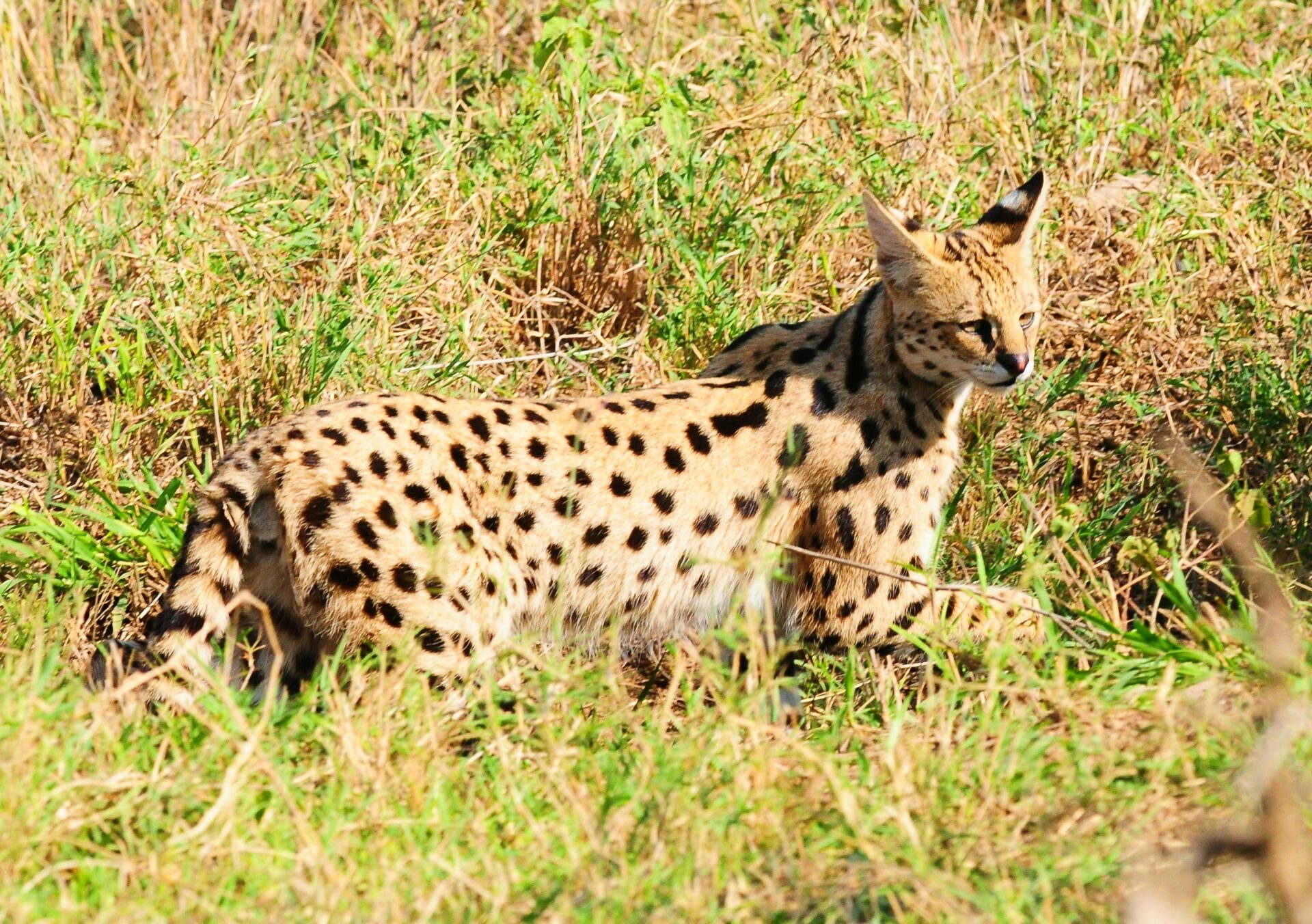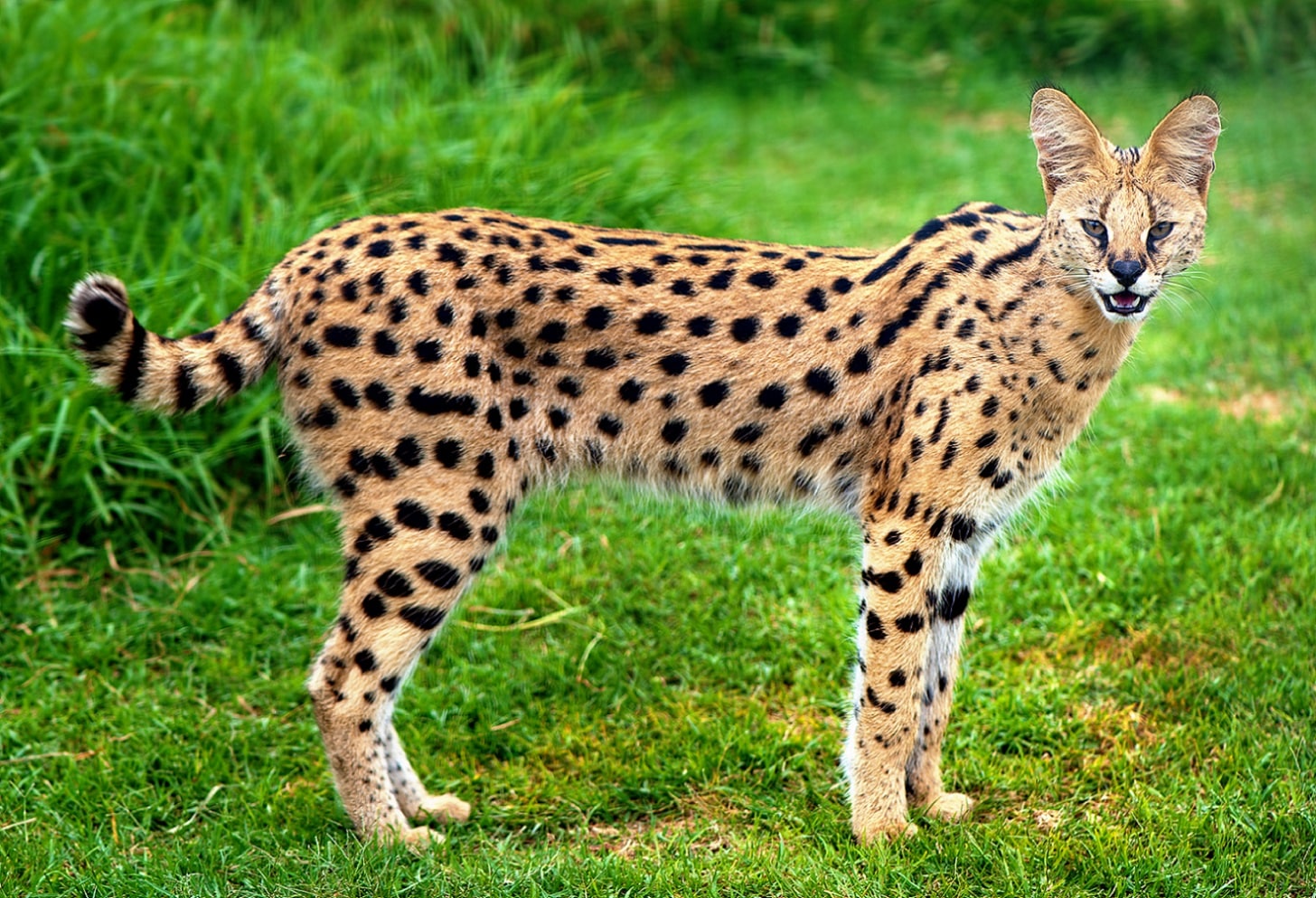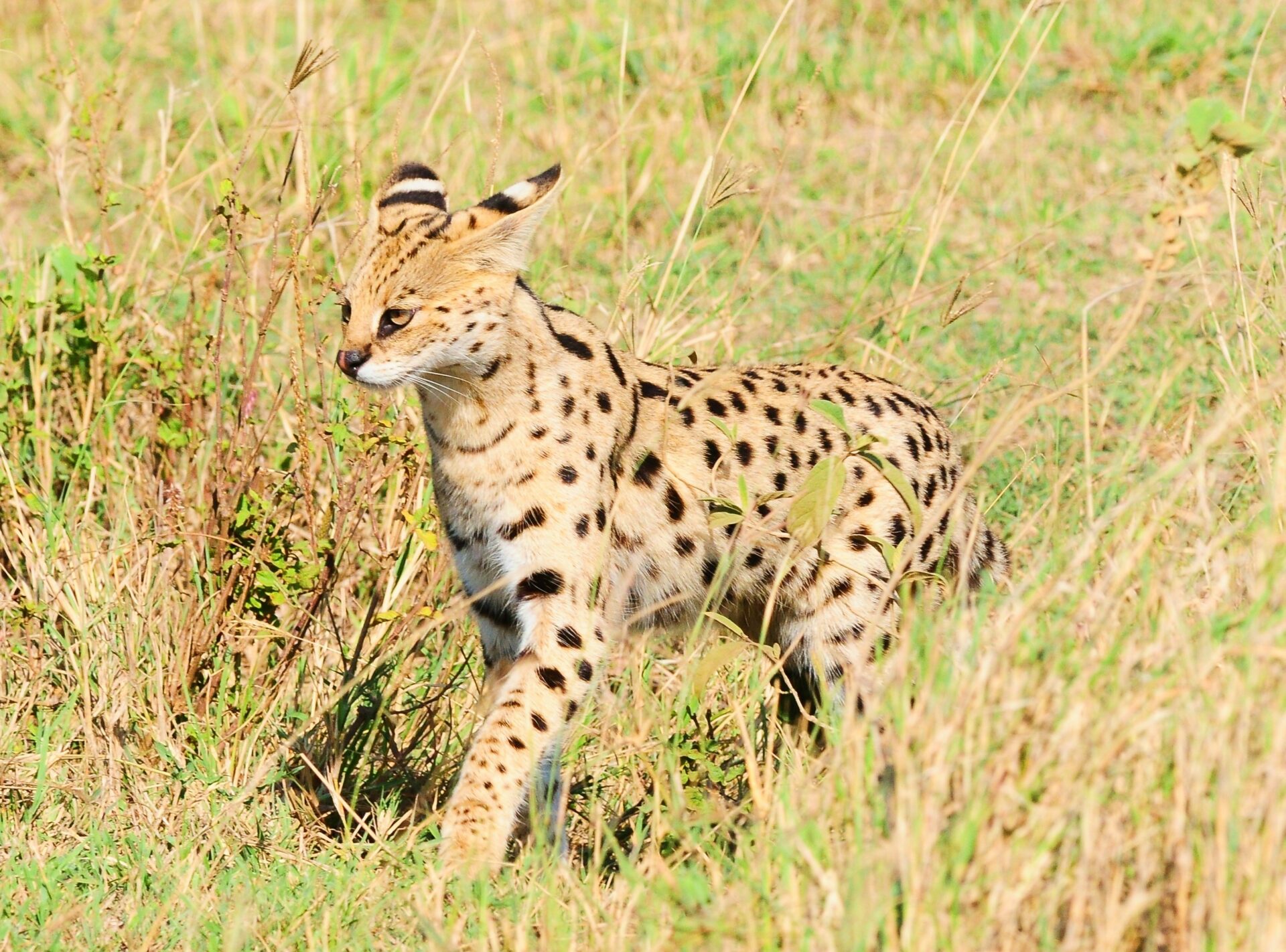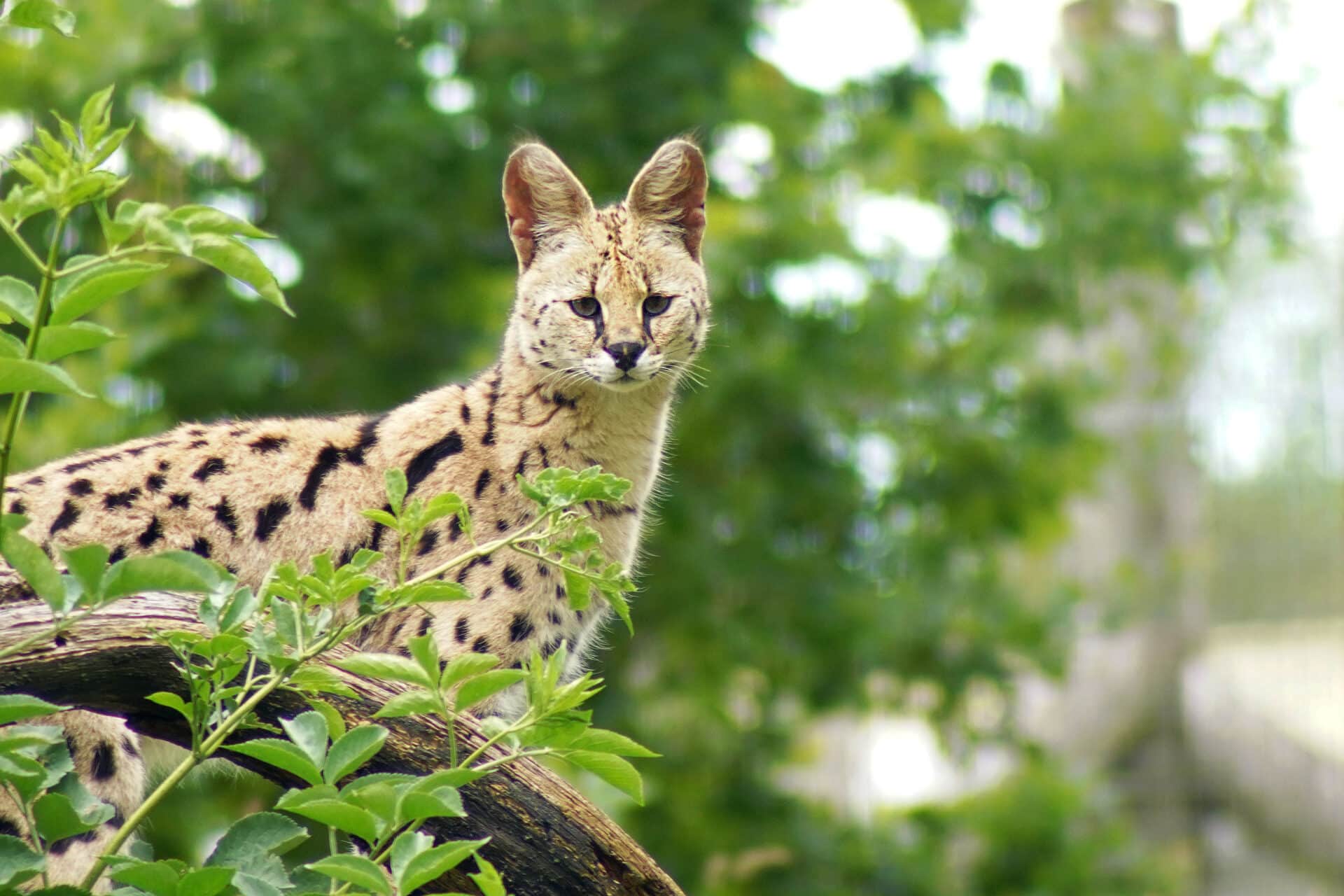Serval
Common Name: Serval
Scientific Name: Leptailurus serval
Servals can jump up to 3m high into the air and a single pounce may span 3 to 6m!
The serval has the longest legs (compared with the size of their body) of any cat species. They use their long limbs and extended mobile toes to probe burrows, hooking rodents from their nests with their strong hooked claws.
Servals spend most of their lives on their own (solitary), except during breeding or if a female has kittens.
Around half of all hunting attempts made by servals are successful. This is a significantly higher success rate than many other species of cat.
Strong winds disrupt the servals’ ability to hear and locate prey with sufficient accuracy for hunting. Unless they are extremely hungry the serval rarely hunts when the weather is windy
Fast Facts
-
Status
Least concern
-
Size
Head and body length: 59 - 92 cm; Tail length: 20 - 38 cm; Height: Up to 60cm at the shoulder.
-
Weight
7kg - 13.5kg
-
Gestation
74 days
-
Young
1 - 4
-
Life span
10 years in the wild
20 years in captivity
In the wild
Servals will eat smaller animals such as fish, birds, small mammals (including mice, shrews, rats, and scrub hares), insects, snakes, lizards, and even some grasses.
This cat will mostly hunt at dawn and dusk, but will sometimes hunt in the day. They will use their large ears to listen out for smaller animals hiding away in tall grass. As soon as they have pinpointed their prey, they will jump high in the air and strike it down with its paws. They have even been known to use this hunting method to catch birds and insects in mid-flight!
These cats are found in Africa, mostly in countries that are south of the Sahara Desert. Servals prefer habitats such as grasslands, forest edges, wooded areas with grassy clearings and moist habitats including marshes and reed beds.
After mating the male will stay close to the female for around 4 days before leaving, as the males do not help look after the young. The female will make a den when she is close to giving birth, in dense vegetation or in an unused burrow (from a porcupine or aardvark).
Serval kittens are born with their eyes closed and their ears folded over, that will start to unfold and grow quickly as the kitten gets older. After 9-13 days, the young servals open their eyes and the mother will begin to bring back solid food for them to eat after 1 month. The youngsters are weaned from their mother at 4-5 months as their adult teeth start to come through at 6 months, which is also around the same time that they will start to hunt for their own food. They stay close to their mother’s territory until they are about 1 year old, then the mother chases them away for them to find their own homes. Servals are fully mature at around 1-2 years old.
Even though servals are predators, they do face threats from other animals such as hyenas, leopards, lions, Nile crocodiles and African wild dogs. In some areas servals may face problems with other smaller cats called caracals, as they hunt the same prey animals as the serval.
Servals will use their colourings to hide away or blend into their surroundings (camouflage), to stay safe away from threats and to keep out of sight of their prey.
The main threats these small cats face in the wild is hunting (for fur, killed by farmers to protect domestic animals and traditional medicines), habitat loss and degradation. This is mostly linked with loss of wetland habitats (which is where most of their prey live), burning of grassland areas, overgrazing by livestock and more land wanted for farming.
At this time there is no known conservation projects put in place for the serval, as they are found in many protected areas in its range.



